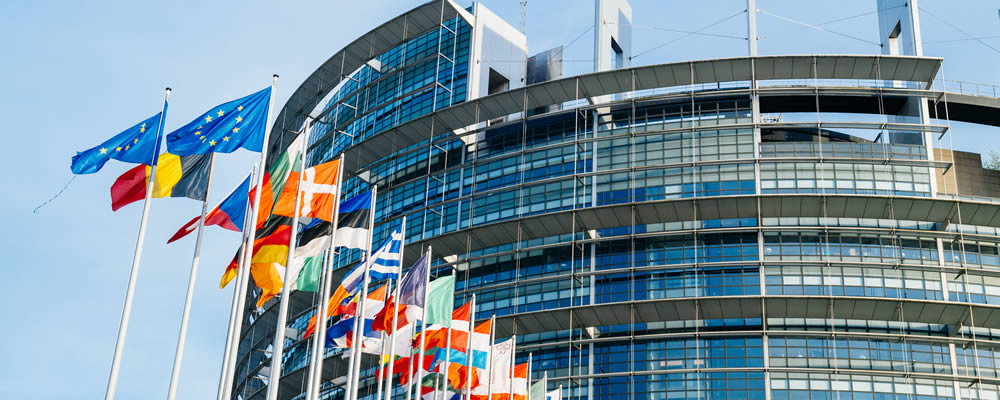Euro to US Dollar Exchange Rate Surges on Federal Reserve Rate Cut Bets
In the past few weeks, the Euro to US Dollar (EUR/USD) exchange rate has seen a significant pick-up in demand. The pair has soared from its worst levels in years, to its best levels in over half a year –all because of the coronavirus outbreak.
In the past week alone, EUR/USD opened the week at the level of 1.1027 and has seen almost three cents worth of gains.
EUR/USD is trending just below this morning’s high of 1.1335 at the time of writing. This was the highest level for EUR/USD since June 2019 – around eight months ago.
To put EUR/USD’s recent surge into perspective, EUR/USD gradually tumbled in the second half of 2019 before touching a post-2017 low of 1.0783 in February. Since the 21st of February, EUR/USD has rocketed a huge four cents.
Will this bullish performance continue though? That may depend heavily on the tone the European Central Bank (ECB) takes in next week’s policy decision.
Euro (EUR) Exchange Rates Surging on Rival Weakness and Central Bank Speculation
The Euro remains one of the market’s most appealing major currencies this week. Despite Italy’s Covid-19 outbreak worsening, the Euro has been benefitting from some of the market’s safe haven demand.
With major currencies like the Pound (GBP) and US Dollar slumping on rising central bank interest rate cut bets, the Euro is benefitting from their losses.
The European Central Bank (ECB) is perceived as having less room to move on monetary policy. With ECB interest rate cut bets limited, the Euro has been rising as other currencies fall.
On top of rival weakness and central bank speculation, recent Eurozone data has also been decent.
Today’s German factory orders results from January were stronger than forecast at 5.5%. While markets expect factory activity to weaken again amid the coronavirus outbreak, the news was still supportive for the Euro’s recent strength.
US Dollar (USD) Exchange Rates Continue to Tumble on Fed Rate Cut Bets
The US Dollar’s (USD) plunge has been a big event for forex investors over the past week.
As the week has gone on, coronavirus concerns and the flexibility of the Federal Reserve’s monetary policy has meant that Fed rate cut bets have continued to rise.
The Fed announced an emergency interest rate cut of 50 basis points to 1.25% earlier in the week. However, with Fed rates still high and the impact of Covid-19 expected to rise further, Fed rate cut bets still rise.
With many Fed rate cuts expected over the coming year, the US Dollar extends losses.
The sudden shift from US economic confidence to a large number of rate cut bets is the reason behind the US Dollar’s sudden bearishness.
Euro to US Dollar (EUR/USD) Exchange Rate Could Continue to Climb
If Eurozone data continues to impress, and Federal Reserve interest rate cut bets remain high, the Euro to US Dollar exchange rate could be in for further strength in the coming weeks.
Next week will be a major one for Eurozone data. German trade is due on Monday, with Eurozone growth and employment on Wednesday.
However, the biggest event next week will be the European Central Bank’s (ECB) March policy decision.
If the ECB indicates that it is not in a hurry to ease already very loose Eurozone monetary policy, the Euro’s rally could persist.
On the other hand, if the ECB is notably dovish on the coronavirus and the week’s Eurozone data disappoints markets, it could mark the end of the Euro’s latest strong streak.
As for the US Dollar, investors may be overlooking upcoming US data unless it is particularly shocking. This is because of Covid-19’s impact on the US economic outlook and Federal Reserve interest rate cut bets.
Kit Juckes, Foreign Exchange Strategist at Societe Generale, said this about today’s upcoming US Non-Farm Payroll report:
‘Today’s headline act is supposed to be the US jobs report. Consensus expects a 175k gain. Our economists forecast a 178k gain. The market is only going to care if we get a shocking number and even then, it’s only prematurely weak data that the capacity to shock.’
Overall, Covid-19 and central bank developments remain the biggest focus for the Euro to US Dollar (EUR/USD) exchange rate.



